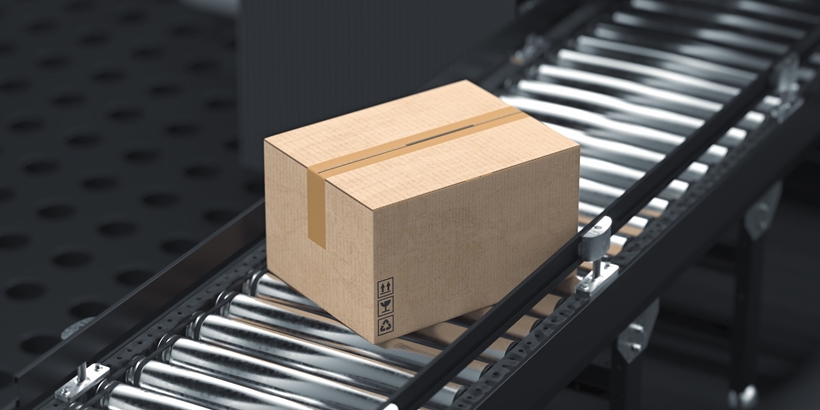
With the robots, customers can choose when the items would be delivered to them instead of following a fixed delivery schedule, resulting in more convenience and faster deliveries.
Two autonomous robots by local technology firm OTSAW have been delivering parcels and groceries at the lift lobbies of seven Housing Board blocks at Waterway Woodcress as part of a one-year trial that started in February, reported Channel News Asia (CNA).
The trial will pave the way for the wider use of robot “couriers” for on-demand delivery services.
With the robots, customers can choose when the items would be delivered to them instead of following a fixed delivery schedule, resulting in more convenience and faster deliveries, the Infocomm Media Development Authority (IMDA) said on Thursday (11 March).
“For instance, after buying groceries such as rice or diapers at a supermarket, a consumer can drop off the purchases at a concierge counter to continue shopping or dining and have them delivered to their HDB block at a time the consumer chooses,” it said as quoted by CNA.
“Other items that could be delivered through these robot couriers include perishables such as food or flowers, and even controlled items such as medicine.”
The authority noted that the trial will assess artificial intelligence technologies for communications systems and road networks; autonomous navigation, obstacle detection and avoidance; and business models for commercial viability.
For the trial, IMDA is partnering the Land Transport Authority (LTA), the Housing and Development Board (HDB), Urban Redevelopment Authority (URA), supermarket chain NTUC FairPrice, local logistics service provider CM Logistics and technology company OTSAW.
Customers getting parcels delivered can choose the delivery date once they make their online order. The items will be delivered by CM Logistics to the dispatch hub and set the delivery time with the customer.
In case of groceries, NTUC FairPrice customers can take their groceries to the dispatch hub and set the delivery time.
During delivery day, the robot will go to the collection point of the customer’s HDB block at the scheduled time.
A notification via a mobile app will be sent to the customers when the robot is on its way and when it has arrived at its destination.
The items can be collected by customers from the robot with the use of a one-time password or QR code, ensuring that only authorised persons can access the assigned compartment within the robot and its contents, explained IMDA.
“Public safety is paramount,” said IMDA in announcing the trial.
It revealed that the two robots passed the safety assessment of LTA for the supervised use of autonomous vehicles on public paths.
At 80kg when unloaded, each robot is capped at “walking speeds” of around 5kmh, said IMDA. A safety officer will accompany each robot during the trial period.
Known as the Camello, OTSAW’s robot deployed in the trial is equipped 3D LIDAR sensors, sonar, a camera, an independent four-wheel drive with differential steering and two weatherproof compartments with a 100L total capacity, showed an IMDA-provided graphic.
With the rise of e-commerce, consumers have become accustomed to home deliveries within increasingly shorter period of time, said Kiren Kumar, Deputy Chief Executive of IMDA.
“Autonomous delivery robots can play an important role in augmenting existing delivery infrastructure to enhance the consumer experience and drive productivity gains,” he added as quoted by CNA.
URA’s Group Director for R&D Chiu Wen Tung noted that efforts such as these will enable the city-state to become “more liveable, sustainable and connected”.
“Employing technology to explore alternate and innovative modes of delivery is one way Singapore builds a world-class urban logistics system that also enhances land and labour productivity,” he said as quoted by CNA.
The public-private trial also received support from industry partners.
“With the exploding demand in e-commerce deliveries, coupled with concerns on environmental impact and a constant challenge with commercial sustainability, we believe utilising the (autonomous robots) is the way forward towards a smart delivery solution in the future,” said CM Logistics CEO Chiam Kok Yaw as quoted by CNA.
Senior Minister of State for Communications and Information Janil Puthucheary explained that they have chosen Punggol since the area’s demographic group are likely “to use these types of online ordering – a bit more familiar with tech”.
“But there is an aspect about how the estate was designed, and you know, we have clear pathways and ramps – not something that we had to retrofit because this is a new estate, very updated regulations that were in place at that time. So I think it’s a combination of those factors.”
He added that the proximity of a logistics hub and supermarket also played a role in their decision.
Victor Kang, Digital Content Specialist at PropertyGuru, edited this story. To contact him about this story, email: victorkang@propertyguru.com.sg


